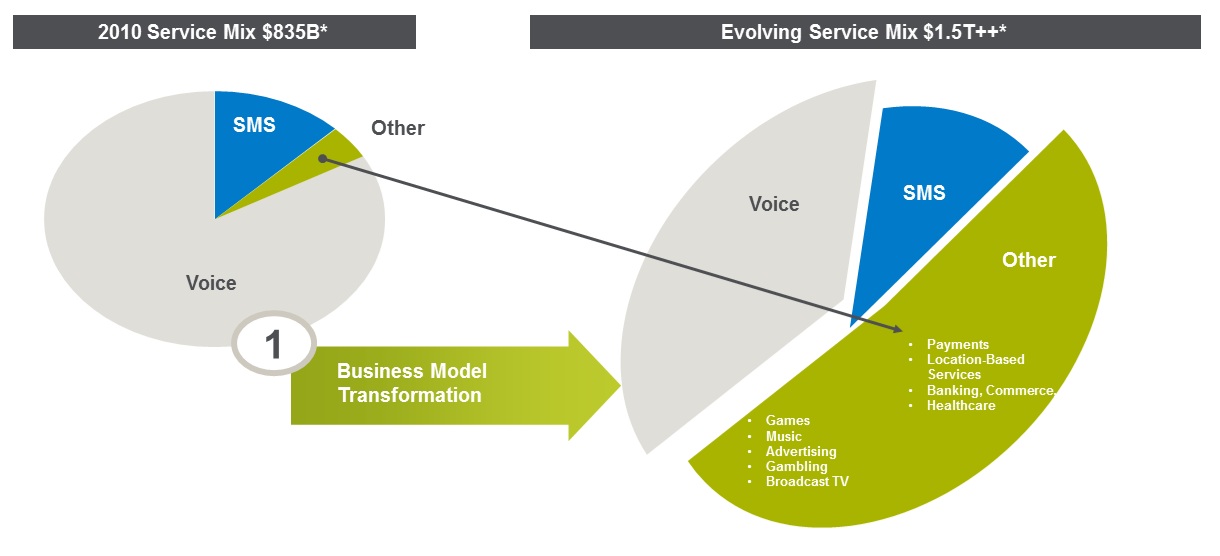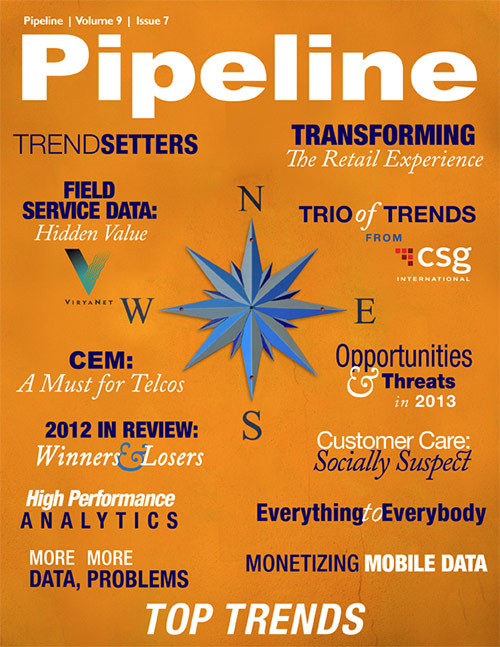Monetizing Your Data Traffic
By: Manuel F. Rivelo

Today’s mobile environment is challenging for communications service providers (CSPs). Data usage is skyrocketing as users continue to find access to more content on the internet (video, multimedia and interactive and social applications) and as mobile devices become an integral part of people’s lives. Mobile broadband connectivity continues to grow as more subscribers sign up for mobile data services. The introduction of 4G LTE wireless networks means that a high-speed data highway is available to mobile customers at an unprecedented level. Subscribers are taking advantage of these networks and utilizing the bandwidth available to them.
In December 2011 consumers in the United States watched 43.5 billion individual videos online, an increase of 44 percent over the previous year. Smartphone usage is increasing as well, with 31 percent more Americans owning a smartphone in February 2012 than nine months prior.
Unfortunately, increased data usage does not translate directly to increased revenue for many service providers, whose revenues and profits are shrinking as they struggle with the high cost of keeping their networks current with new technologies and increasing their capacity to manage the massive growth in data traffic. In addition a large portion of the potential revenue from data traffic is actually bypassing the CSPs and going directly to over-the-top providers.
It is clear that service providers must innovate aggressively to increase their revenues and profitability while also increasing their subscribers’ quality-of-service (QoS) experience (see Figure 1). The landscape is littered with multiple technologies and strategies designed to capitalize on the data explosion by leveraging the context of the data and applying a policy to enhance the user experience. Aditya Kaul, practice director of mobile networks at ABI Research, states, “While policy, DPI [deep packet inspection] and optimization have traditionally had separate ecosystem vendors, there are some indications that these functionalities might get integrated.” She adds, “Although there is an ongoing debate within the industry about the pros and cons of this integration, the interworking and cooperation of these three functions is necessary to deliver smart mobile-traffic monitoring, optimization and monetization solutions.”

Figure 1. Mobile Internet Transformation
*Source: Chetan Sharma Consulting, 2012 forecast of $1T with data representing 29 percent of mix
CSPs are looking at every possible avenue to monetize this integration trend; some of these technologies will be successful and some will not. Service providers that have created a flexible policy management framework that allows for the integration of new policies and technologies with minimal disruption to their existing services will be more agile and adaptable to the evolving mobile landscape.
With a flexible and scalable policy management framework, service providers can set up new rate plans and services that not only will increase revenues but will allow them to optimize the network utilization of their infrastructure. Note that policy management means more than storing customer profiles in a database and having the means to detect and apply rate limiting and QoS policies. Using an LTE wireless network as an example, a Policy and Charging Rules Function (PCRF) for storing policies and a Policy and Charging Enforcement Function (PCEF) for applying those policies are not enough to guarantee success in this hyper-dynamic environment. Some of these new service offerings incorporate traffic steering in value-added services, which include video optimization, URL filtering and parental controls. Looking forward, other services utilizing components such as firewall infrastructure and DNS may become integrated into the policy management system, providing more advanced services that integrate other network functions.



















